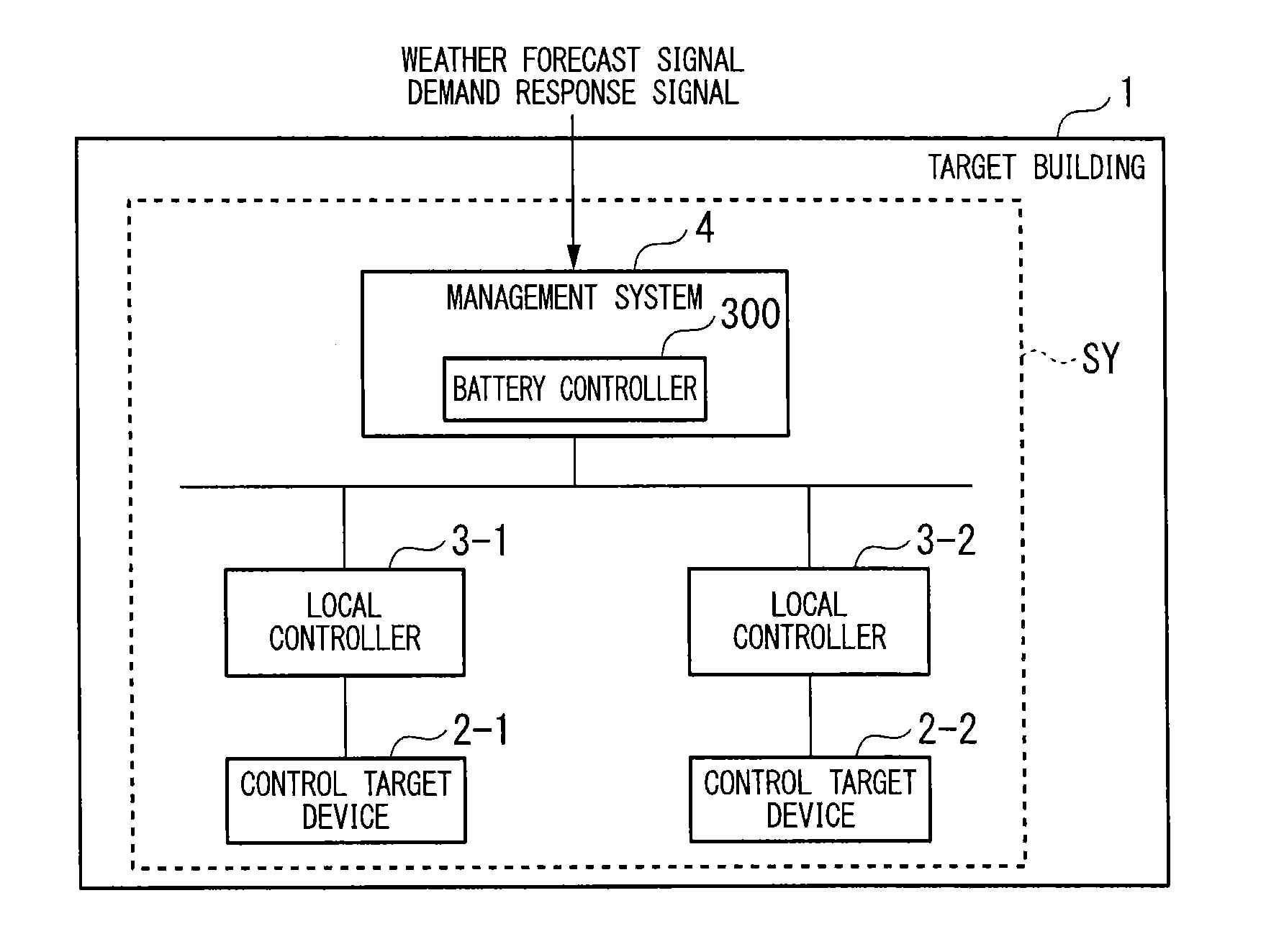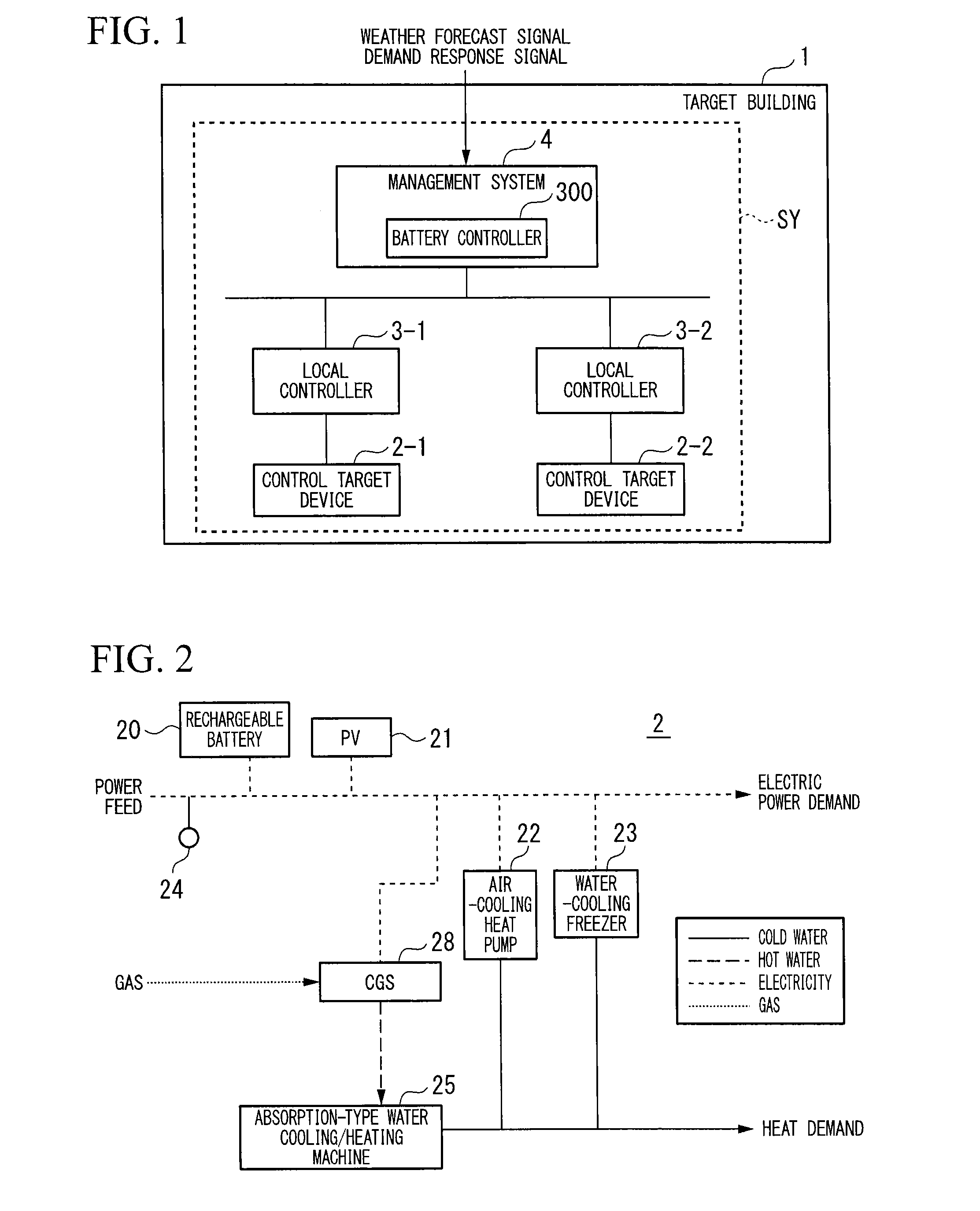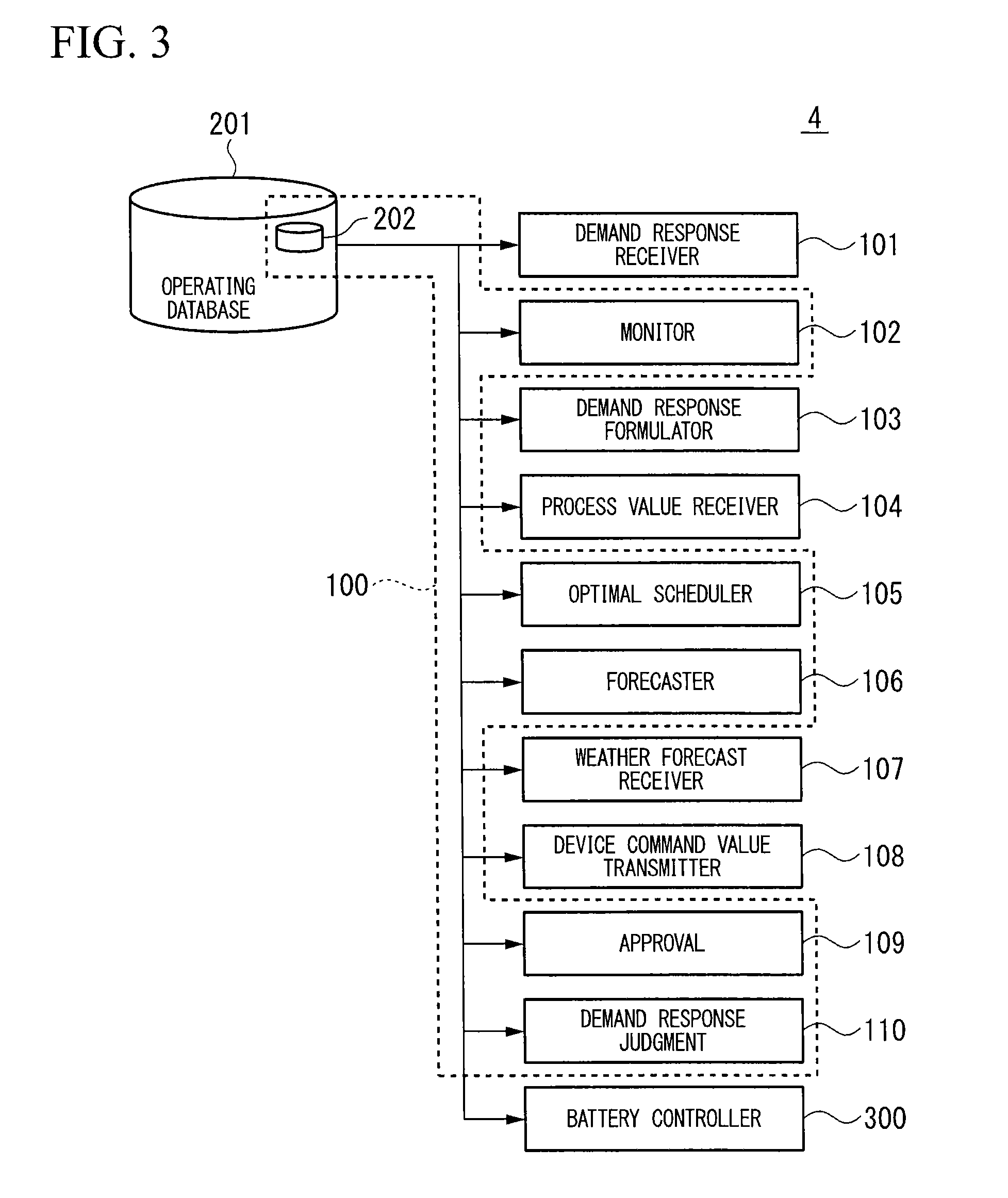Battery controller, management system, battery control method, battery control program, and storage medium
a battery controller and management system technology, applied in the field of battery controllers, can solve the problem of not being able to efficiently control the power supplied to the equipment, and achieve the effect of efficient control of electric power
- Summary
- Abstract
- Description
- Claims
- Application Information
AI Technical Summary
Benefits of technology
Problems solved by technology
Method used
Image
Examples
first embodiment
[0026]The battery controller controls charging and discharging of a rechargeable battery, based on a demand response (DR) signal, thereby enabling control of the electric power supplied to the controlled equipment from the rechargeable battery.
[0027]FIG. 1 shows a control system SY. The control system SY may be provided in the target building 1, or may be provided in a predetermined location outside the target building 1. The control system SY may be provided with distributed functional blocks. In the following, the description will continue as an example the control system SY being provided in the target building 1.
[0028]The control system SY has a control target device 2, a local controller 3, and a management system 4. There may be a plurality of control target devices 2. That is, the control system SY may have control target devices 2-1 to 2-n (where n is an integer of 2 or greater). The control system SY has the local controller 3, and may also have a plurality of local control...
second embodiment
[0111]In the second embodiment, the discharge of the rechargeable battery 20 is executed continuously immediately before the holding time, this being different from the first embodiment. In the following, only the differences with respect to the first embodiment will be described.
[0112]The charge and discharge of the rechargeable battery 20 is used in adjusting the received power amount supplied to the control target device 2 from the electrical power system. For this reason; the required electricity unit price for charging and discharging of the rechargeable battery 20 are the same as the received electricity unit price. Therefore, there are cases in which the rechargeable battery 20 is charged by a high electricity unit price in the peak time period during the day. For example, in the first embodiment, the item “charging cost during the DR time period” indicates that the charging cost of the rechargeable battery 20 in the third hour of the DR time period is “15,000 Yen” (refer to ...
third embodiment
[0141]In the third embodiment, the discharging of the rechargeable battery 20 so that the received power amount does not exceed the command value is the difference with respect to the second embodiment. In the following, only the differences with respect to the second embodiment will be described. In the third embodiment, the description assumes that the reverse current does not occur.
[0142]The received power meter 24 detects the received power amount supplied to the control target device 2 from the electrical power system over a predetermined time by accumulating a value of electric power supplied to the control target device 2 from the electrical power system over a predetermined time.
[0143]FIG. 15 shows the limit values of the received power amount, in which the horizontal axis represents time and the vertical axis represents the received power amount (kWh). The variation of the received power (kWh) supplied to the control target device 2 from the electrical power system from the...
PUM
 Login to View More
Login to View More Abstract
Description
Claims
Application Information
 Login to View More
Login to View More - R&D
- Intellectual Property
- Life Sciences
- Materials
- Tech Scout
- Unparalleled Data Quality
- Higher Quality Content
- 60% Fewer Hallucinations
Browse by: Latest US Patents, China's latest patents, Technical Efficacy Thesaurus, Application Domain, Technology Topic, Popular Technical Reports.
© 2025 PatSnap. All rights reserved.Legal|Privacy policy|Modern Slavery Act Transparency Statement|Sitemap|About US| Contact US: help@patsnap.com



